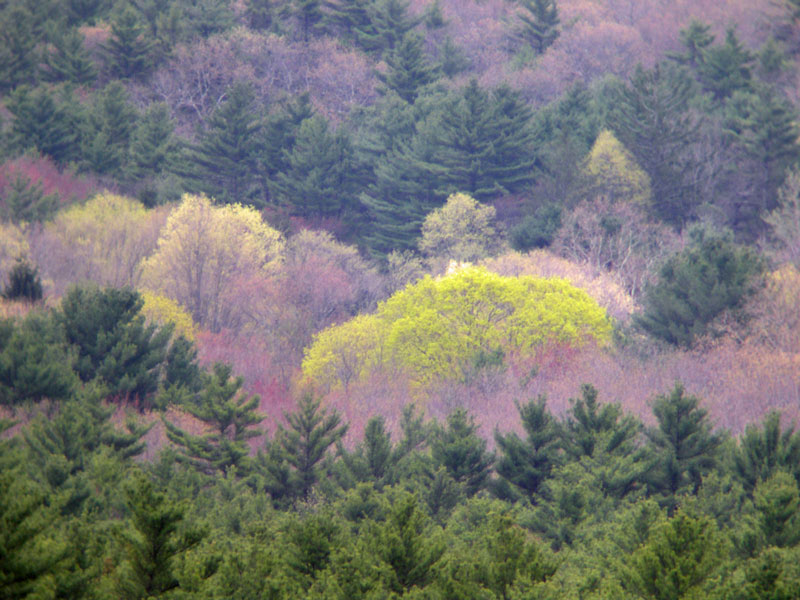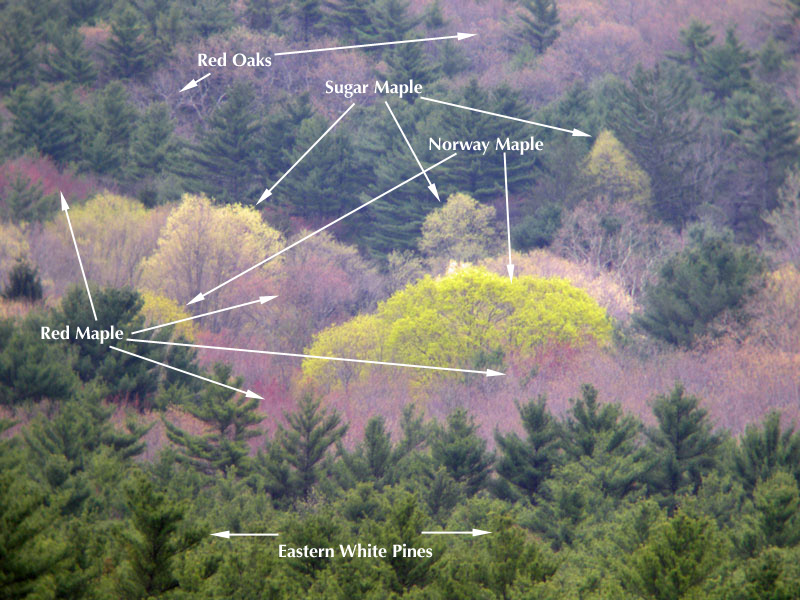Spring is always an exciting time for birdwatchers, as migrants pass through and summer residents return, all in their flashy breeding plumage. This time of year is equally interesting for tree-watching, and it is the best time of year for identifying trees from a distance by their color.

Color is generally not very useful for identifying trees – only about as useful as overall color is for identifying birds at a distance. You can use it as a supporting clue along with other features, but usually you need to see a few more details. In the spring, however, as leaves emerge and many species flower, the differences in color can be striking, and color is somewhat less variable than it is on fall or summer trees.
In this photograph, the brilliant lime green of Norway Maple flowers stands out at a great distance. The paler yellow-green of Sugar Maple flowers is more subtle but no less beautiful or distinctive. Red Maples finished flowering several weeks earlier, but some (female) trees are still suffused with the red of the developing fruit. Oaks are just beginning to flower and leaf out, and their crowns show a haze of pale green tinged orange or reddish.

Not all trees can be identified by their color, but many can, and it makes spring a particularly easy and enjoyable time to watch trees.


We have a beautiful robin in our yard that continues to fly up against our windows and doors, asking relentlessly to be let in…He’s been doing this for over two weeks now. I’ve told him I’m aware the time is short and to spread the word elsewhere but he is tireless. Any answers? Thank you.
This behavior is pretty common this time of year. The bird sees its reflection in the glass and thinks it is seeing a rival, so it poses and threatens and eventually attacks in a effort to drive the “intruder” away. You can cover the glass (outside) with something non-reflective. Taping up paper or plastic, and possibly even a soap film would eliminate the reflection, but in many cases after a window is covered these birds simply find another window on your house. If all else fails you can take consolation in the fact that the bird’s territorial drive will fade in a few weeks and the behavior should stop.
Pingback: The Up and Down of Fall – Lambton Wildlife